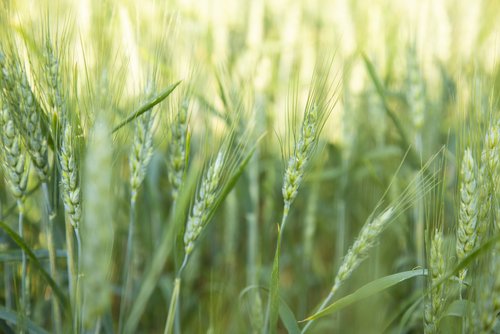Investigating Crop Management Options to Lessen the Impact of Fusarium Head Blight in Wheat

Written by: Ellen Cottee
Lead Researcher: Dr. Kelly Turkington (AAFC – Lacombe)
Fusarium Head Blight (FHB) has long been an enemy of wheat producers across Canada. Emerging heavily in Manitoba in the early 1990s and spreading through the prairies in the late 2000s, the fungal disease causes kernel damage and wheat grade detrimental to producers’ bottom lines. In the worst-case scenario, FHB causes deoxynivalenol (DON), a mycotoxin dangerous to animals and humans if ingested.
Previous research on FHB focused on better understanding the pathogen and breeding new wheat varieties for resistance. While important in the ongoing fight against the disease, this approach neglects on-farm management options producers are able to implement themselves.
“It really has been a complex issue,” Dr. Kelly Turkington, researcher with Agriculture and Agri-Food Canada – Lacombe said. “It’s a challenging disease for farmers to manage and in terms of research.”
Long interested in the prevention of FHB in wheat crops, Turkington launched two new projects under the 2018 – 2023 Canadian National Wheat Cluster to examine the impacts of crop management choices on the presence of FHB.
The first of Turkington’s projects focuses on how seeding rates could improve fungicide efficacy with fewer applications. Lower seeding rates lead to a wide window of head emergence, complicating the current fungicide recommendation of application at 75 per cent head emergence.
“That means you still have 25 per cent of the heads still in the boot, not directly protected by fungicide,” Turkington explained. “Once those heads emerge, they have no protection from the pathogen.”
Increased seeding rates can provide more uniform crop development and therefore more uniform targets in fungicide application. Trials combined different seeding rates with various fungicide practices, allowing Turkington and his team to see the larger picture. In the future, Turkington said research will likely integrate external factors, such as weather and pathogen forecasts, to build out recommendations for seeding rate and fungicide best practices.
Turkington’s second project examines the direct impact of crop management practices on FHB presence. One trial in the project focused on residue management – removing and treating all crop residue, including the chaff of the wheat, in order to reduce the amount of inoculum returned to the field following harvest.
Extended crop rotation periods, described as more than one year of a non-host crop before planting wheat, also showed success in trials. More time between the planting of susceptible varieties and crops allows for the inactivation of pathogen residue left on the field. While good news, Turkington clarified that the drought conditions of 2021 may have impacted the team’s assessments and they will need to collect further data this spring.
With the final public report slated for release after the cluster closes March 2023, Turkington said he hopes his projects, along with future research, will give producers more FHB-fighting power.
“There are tools available, and I think we can tweak those tools,” he said.
“With the work we’re doing under the current cluster program … we have strategies – and perhaps some refinements – that will greatly help producers achieve better management of FHB on an annual basis.”